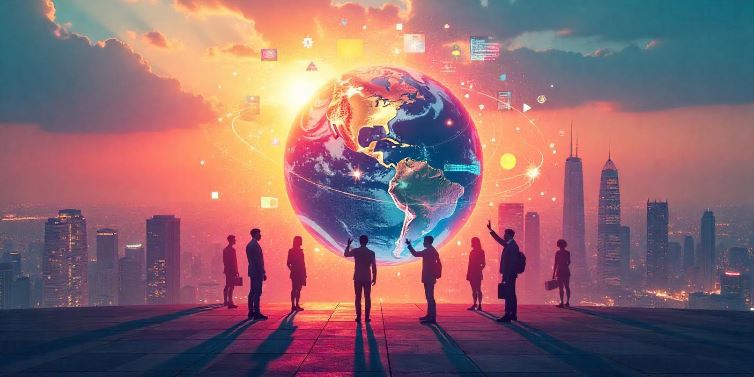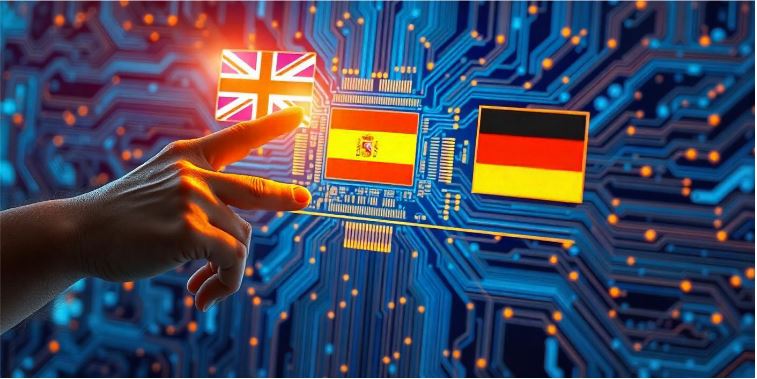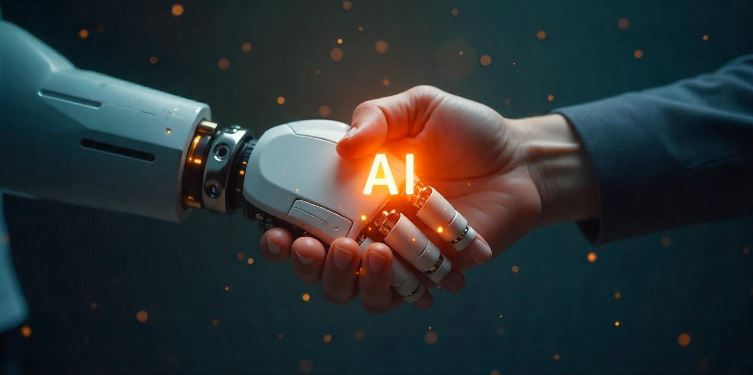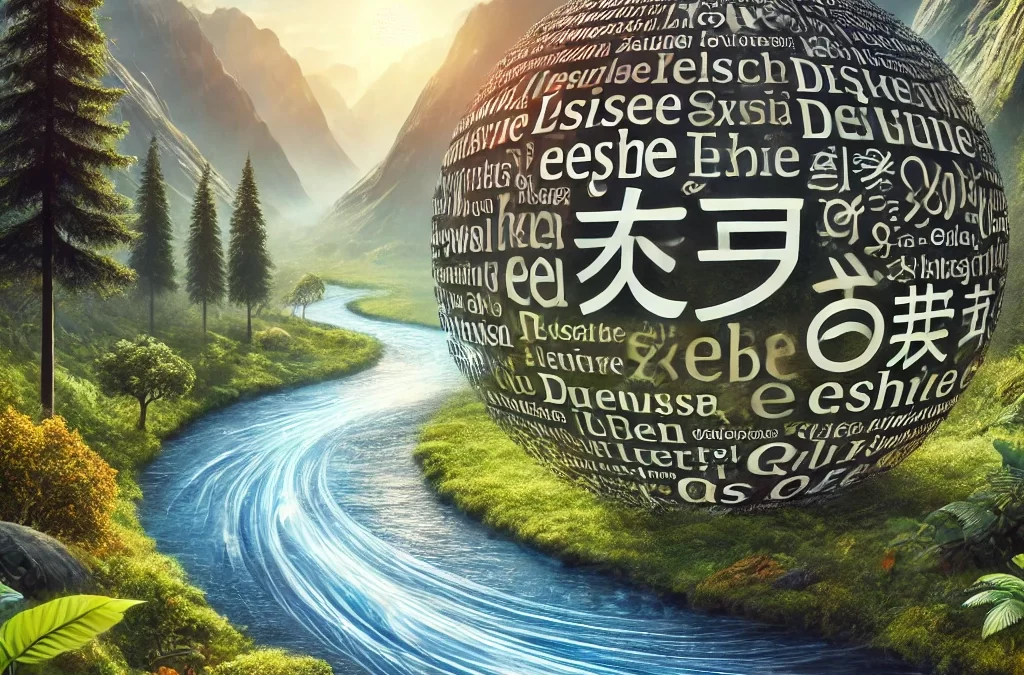Advanced neural machine translation
The world has become a “global village” and communication among speakers of different languages is more important than ever. The translation industry plays a crucial role in this, connecting people, cultures and markets. With the advancement of artificial intelligence, the translation sector has undergone a real revolution.
Advanced neural machine translation (NMT) systems have accelerated the translation process, improved the quality of translated texts and bridged language barriers worldwide.
What is neural machine translation? What are its main advantages and disadvantages? Will NMT
replace human translators? These are key topics we will discuss in this blog.

WHAT IS NMT AND HOW DOES IT WORK?
Early machine translation (MT) methods were based on rules and statistical models and performed word-for-word substitutions. Such translation often resulted in poor and inaccurate translations with mismatched context. Later, neural machine translation (NMT) systems emerged, which are based on artificial neural networks inspired by the structure of the human brain. Artificial neural network algorithms process data through layers of “neurons” to recognize patterns and make decisions.
These advanced systems can now somewhat understand context and cultural nuances, allowing for more natural and accurate translations. Neural machine translation algorithms learn from vast amounts of data, with the quality and diversity of that data being crucial for developing effective artificial intelligence models and, consequently, achieving quality translations.
Diverse data, including different dialects, colloquial expressions and cultural contexts, helps AI systems better understand linguistic nuances, reduce errors and improve overall translation accuracy.

ADVANTAGES OF NEURAL MACHINE TRANSLATION
- EFFICIENCY: Manual translation is slow and time-consuming, while neural machine translation (NMT) systems can process large amounts of data in a short time. AI systems do not require breaks like humans, making the entire translation process significantly faster and more efficient.
- CONSISTENCY: Each human translator may interpret a text differently, while artificial intelligence algorithms follow precisely defined rules, ensuring consistent and predictable translations. Such consistency is especially important for companies requiring uniform communication across all language variants.
- ACCURACY: AI systems have access to large databases, dictionaries and translation memories, enabling them to provide accurate translations, particularly in specialized areas such as technical, legal and medical texts. These systems continuously learn and increasingly understand linguistic nuances and context, leading to higher quality and more precise translations.
- COST SAVINGS: AI translation systems work much faster than humans and can translate many languages simultaneously, allowing for significant time and cost savings by reducing the need for a large number of translators and speeding up the entire translation process.
AI systems still cannot fully understand context, cultural differences, And linguistic phenomena that require deeper knowledge of the Language.
LIMITATIONS OF AI IN TRANSLATION
- CONTEXT AND LINGUISTIC UNDERSTANDING: AI systems still cannot fully understand context, cultural differences and linguistic phenomena that require deeper knowledge of the language, which is crucial for adapting the style and tone of translations. Additionally, AI often cannot incorporate emotions and human tone into translations, causing the translation to lose meaning and sound robotic.
- COMPLEX CONTENT: Certain translations, such as medical and legal documents, require specialized knowledge that AI may not possess.
- BIAS: AI systems can learn from biased data, which may lead to misunderstandings, especially in sensitive and political contexts. To avoid misunderstandings and errors, it is important to conduct strict monitoring and data verification.
- LANGUAGE AND DIALECT LIMITATIONS: AI translation systems do not support all languages and rare languages often lack appropriate support. Different dialects and language complexities present additional challenges for translation accuracy.

HOW AI IS CHANGING THE TRANSLATION INDUSTRY?
The main misconception is that artificial intelligence (AI) is a threat to human translators. Instead of taking their jobs, AI is changing their role in the translation process. Today, instead of doing foundational translations, people are becoming proofreaders and editors, ensuring quality and accuracy after AI completes the translation. AI systems quickly and accurately process large amounts of data and take over repetitive tasks, allowing humans to focus their skills on subtleties, creative expressions and content that requires a deep understanding of language.
Linguistic nuances, cultural context and creative aspects remain areas where humans outperform AI. This division of labor increases efficiency and the overall quality of translations.
However, in this rapidly evolving technological environment, translators will need to adapt to the industry and develop new skills to maintain their competitiveness. Therefore, artificial intelligence will not replace human translators but will serve as a professional tool and assistant.
AI translation systems could advance to the point where it will be almost impossible to distinguish whether a text was translated by a human or a machine.
FUTURE OF AI TRANSLATION
Artificial intelligence will undoubtedly bring significant changes to the field of translation in the future. With access to new data and more advanced algorithms, AI-powered translation will expand to include lesser-known languages, further contributing to the reduction of language barriers worldwide.
AI models continuously learn, which opens the possibility that they will advance to a point where they will surpass current deficiencies in emotional depth and deeper language understanding, making it nearly impossible to determine whether a text was translated by a human or a machine.
Finally, one of the most significant achievements in the field of translation is real-time translation. This technology already enables high-quality speech translation, representing a significant step forward in helping communication among people who speak different languages. This capability is highly beneficial for international conferences, emergency services and other situations where fast and accurate communication is crucial.
Moreover, in the future, there could be the possibility of translating and interpreting non-verbal communication signs, further enriching the way we communicate and understand each other.
CONCLUSION
Neural machine translation (NMT) has significantly advanced and already provides highly accurate and quality translations. However, it still lacks a deep understanding of context, human tone and emotions, making it incomparable to human translators. Although NMT will not replace human translators, it will undoubtedly bring changes to the translation industry and reshape the role of humans in the translation process. Artificial intelligence has the potential to eliminate language barriers and enable quality real-time translation accessible to all. AI tools represent extremely useful support in translation and their use should be encouraged.
However, it is important to take their results with a grain of salt and enrich each translation with one’s own touch.

OWNVIA – YOUR PARTNER IN TRANSLATION
Your partner in translation – ownvia is an innovative platform that offers various AI tools. ownvia translation tools support translations into German, English, Spanish, French, and Italian from all languages. In addition to standard translation services, ownvia offers advanced tools, TranslationFitChecker and TranslationRiskEvaluator. TranslationFitChecker evaluates the suitability of the text for human or machine translation, while TranslationRiskEvaluator analyzes the risk of automatic translation and potential negative consequences.
Create your private micro-app in ownvia that can translate into the language of your choice, automatically recognizes the source language and uses your own data for training to achieve optimal results. Furthermore, the platform allows for personalization with your own terminology databases and style guides, ensuring consistency and accuracy in translations. By using ownvia AI translation tools, your data remains protected and confidential, and you receive accurate and reliable translations.
Use the power of our AI translation tools and enhance your work! Sign up now and discover how
to translate texts quickly and accurately.



